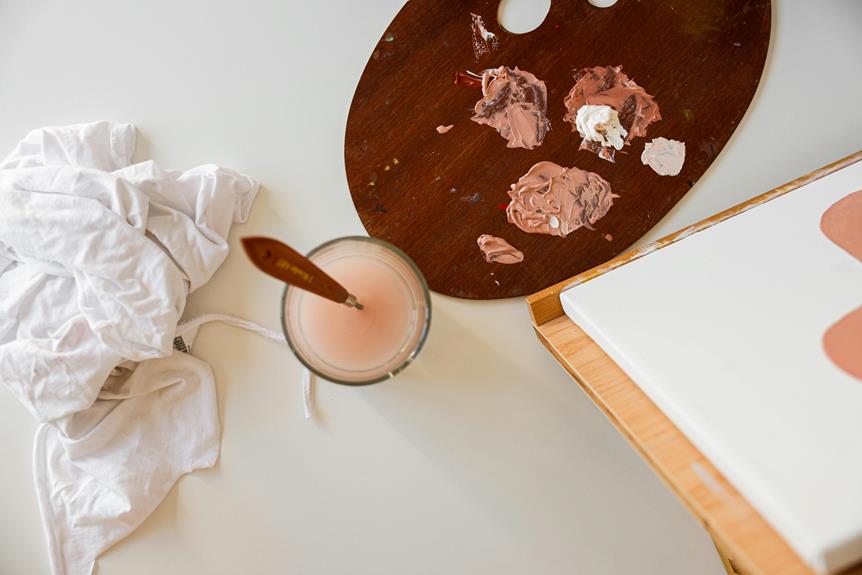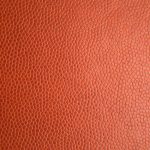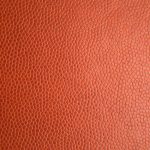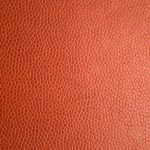When it comes to water resistance, duck canvas presents a mixed bag. You'll find that its tightly woven fibers offer decent protection against light rain, but it's not a foolproof barrier against prolonged moisture exposure. If you're planning to use it in outdoor projects or activities, knowing its limitations and how to enhance its performance could be crucial. What options are available to boost its resistance, and how does it stack up against other materials in truly wet conditions? Let's explore that further.
Table of Contents
Overview of Duck Canvas
Duck canvas is a durable fabric made from cotton, typically characterized by its heavy weight and distinctive ribbed texture.
This unique construction gives it strength and longevity, making it an excellent choice for various applications, from tents to bags and outdoor gear. When you handle duck canvas, you'll notice its robustness, which feels substantial in your hands.
It's woven tightly, which not only enhances its durability but also provides a level of breathability. You can choose duck canvas in a range of weights and finishes, allowing you to find the perfect option for your specific needs.
Whether you're crafting a sturdy backpack or designing outdoor furniture covers, duck canvas stands up to heavy use.
In addition to its functional benefits, duck canvas often comes in various colors and prints, offering versatility for creative projects. You're free to express your style while ensuring you have a reliable fabric.
Plus, when it comes to care, duck canvas is generally easy to maintain, which means you won't have to worry about constant upkeep. Overall, it's a fabric that combines practicality with aesthetic appeal, making it a favorite among DIY enthusiasts and professionals alike.
Natural Water Resistance Properties
The heavy weight and tight weave of duck canvas naturally offer a degree of water resistance that enhances its suitability for outdoor use. This makes it an excellent choice for various applications, from tents to bags, where exposure to moisture is likely. While duck canvas isn't entirely waterproof, its inherent properties help to repel water to some extent while still allowing breathability.
- Plausible Durability: The fabric can withstand light rain or splashes, protecting your belongings during unexpected moisture.
- Longevity: With proper care, duck canvas can last for years, maintaining its water-resistant qualities without frequent replacements.
Treatment Options for Enhanced Resistance
To enhance the water resistance of your duck canvas, you have several treatment options to consider.
You can apply water repellent coatings, use specific waxing techniques, and ensure effective seam sealing methods.
Each option has its benefits, and choosing the right one can significantly improve your canvas's durability against moisture.
Water Repellent Coatings
Often, applying a high-quality water repellent coating significantly enhances the resistance of canvas materials against moisture. This extra layer can be crucial, especially if you're using duck canvas for outdoor applications. By choosing the right coating, you can extend the life of your canvas and keep it looking great.
When considering water repellent coatings, keep these key benefits in mind:
- Improved Durability: A good coating helps your canvas withstand harsh weather conditions, reducing wear and tear.
- Easier Cleaning: With a water-repellent surface, dirt and stains won't adhere as stubbornly, making maintenance a breeze.
Before applying any treatment, be sure to clean the canvas thoroughly to ensure maximum adhesion. Regular reapplication of the coating will maintain its effectiveness. By investing time in selecting and applying a suitable water repellent coating, you'll protect your duck canvas against moisture and prolong its lifespan, ensuring it performs well in various conditions.
Waxing Techniques Explained
Applying wax to duck canvas offers a practical treatment option for enhancing its water resistance. To start, choose a high-quality wax specifically designed for fabric. You'll want to work in a well-ventilated area to keep it safe and comfortable.
Begin by thoroughly cleaning your duck canvas to remove any dirt or debris. Once it's dry, you can apply the wax. Using a clean cloth or sponge, rub the wax into the fabric in a circular motion, ensuring you cover all areas evenly. Pay special attention to seams and edges, as these are often the most vulnerable spots.
After applying the wax, use a heat source, like a hairdryer, to melt the wax into the fibers. This step is crucial—it allows the wax to bond securely with the fabric, enhancing its water-repellent properties. Be careful not to overheat, as this can damage the canvas.
Once waxed and heated, let the canvas cool completely before use. With proper application and maintenance, your duck canvas will now have improved water resistance, helping protect your items from the elements.
Seam Sealing Methods
Seam sealing is essential for boosting the water resistance of duck canvas, ensuring that vulnerable areas stay protected from moisture. You'll want to choose the right sealing method that suits your needs, as different techniques offer varying levels of protection.
- Heat-Sealed Tapes: These adhesive tapes are applied with heat to create a durable seal along seams, effectively blocking water.
- Liquid Sealer: You can brush or spray a liquid waterproofing solution over the seams to enhance resistance. This method penetrates the fabric and creates a protective layer.
When you've sealed the seams properly, you'll significantly reduce the chances of water leaking through. Whether it's for outdoor projects or durable gear, investing time in seam sealing will pay off, keeping your duck canvas firmly resistant to the elements. Remember, the right sealing technique will keep your items dry and increase their longevity.
Performance in Different Weather Conditions
How does duck canvas hold up against rain, snow, and wind? It performs admirably in various weather conditions, giving you reliable protection when you need it most. In light rain or brief showers, duck canvas can repel water effectively due to its tightly woven fibers. However, prolonged exposure may cause water to seep through, especially if the surface isn't treated. Snow poses a similar challenge—it might shed light snowfall but can become saturated over time, so be cautious during heavy snowfall.
Wind can also test duck canvas. It's durable and can withstand strong gusts without tearing or ripping. Here's a quick comparison of its performance:
| Weather Condition | Performance | Recommendations |
|---|---|---|
| Rain | Good | Use waterproofing spray |
| Snow | Moderate | Shake off accumulated snow |
| Wind | Excellent | Ensure it's securely anchored |
Comparing Duck Canvas to Other Fabrics
While duck canvas holds its own in challenging weather, comparing it to other fabrics reveals its unique advantages and potential limitations for different uses.
Duck canvas is thicker and more durable than many options, making it excellent for outdoor gear and projects. However, you might find it less breathable compared to lightweight fabrics.
Nylon is often more water-resistant due to its synthetic nature, but it may lack the robust strength that duck canvas provides.
Polyester can offer a decent blend of water resistance and breathability, yet it may not deliver the rugged aesthetic that duck canvas enthusiasts love.
Cotton is soft and breathable, making it comfortable for everyday wear. However, it doesn't perform as well in water resistance, especially when compared to treated duck canvas.
Care and Maintenance for Longevity
To keep your duck canvas in top shape, regular cleaning is essential.
You'll also want to store it properly to prevent damage and prolong its lifespan.
Let's explore these simple practices that can make a big difference.
Regular Cleaning Practices
Regular cleaning ensures your duck canvas remains durable and retains its water resistance over time. Neglecting to clean can lead to dirt buildup, which might compromise its performance.
- Spot Clean Regularly: Whenever you notice stains or dirt, address them promptly with mild soap and water. Use a soft brush to avoid damaging the fibers.
- Wash Occasionally: Depending on use, wash your duck canvas every few months. Be sure to use cold water and a gentle cycle if machine washing.
Proper Storage Techniques
Properly storing your duck canvas can significantly extend its lifespan and maintain its water resistance. When you're not using your canvas, ensure it's clean and dry to prevent mold and mildew. Fold it neatly rather than stuffing it into a storage space, which can cause creases or damage.
Choose a cool, dry location for storage. Extreme temperatures or high humidity can deteriorate the fabric's integrity. Avoid direct sunlight, as UV rays can fade colors and weaken fibers over time.
If your duck canvas has been treated for water resistance, check the manufacturer's instructions for specific storage recommendations. Occasionally, you might want to air out the canvas to keep it fresh, particularly if you've stored it for a while.
Lastly, always inspect your canvas before use. Look for any signs of wear or damage, and address any issues promptly to ensure it remains waterproof when you need it most. Proper care goes a long way in preserving the quality of your duck canvas!
Frequently Asked Questions
Is Duck Canvas Suitable for Outdoor Furniture Upholstery?
Duck canvas works well for outdoor furniture upholstery due to its durability and stylish appearance. You'll appreciate its strength in withstanding wear and tear, making it an excellent choice for your outdoor decor needs.
Can Duck Canvas Be Used for Waterproof Tents?
You can use duck canvas for waterproof tents, but it's not inherently waterproof. You'll need to apply waterproofing treatments for optimal performance, so consider this if you're planning a camping adventure in wet conditions.
How Does Duck Canvas Handle Heavy Rain?
When heavy rain hits, you'll notice duck canvas can struggle. It absorbs water, which might lead to leaks if not treated. Using a waterproofing spray helps improve its performance and keeps you dry during storms.
Does Duck Canvas Mold or Mildew in Damp Conditions?
Yes, duck canvas can mold or mildew in damp conditions if it isn't properly cared for. Be sure to dry it thoroughly and store it in a dry place to prevent moisture buildup and growth.
Can Duck Canvas Be Washed Without Losing Water Resistance?
You can wash duck canvas, but it may lose some water resistance. To maintain its performance, follow manufacturer instructions and reapply a water repellent treatment after washing to keep your items safe from moisture.
- How Does Ring Spun Cotton Affect Garment Fit and Shape Retention? - August 13, 2024
- What Are the Challenges in Producing Ring Spun Cotton? - August 13, 2024
- Is Ring Spun Cotton Suitable for Plus-Size Clothing? - August 13, 2024







